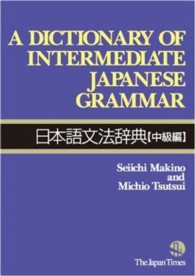Full Description
The interaction of the history of mathematics and mathematics education has long been construed as an esoteric area of inquiry. Much of the research done in this realm has been under the auspices of the history and pedagogy of mathematics group. However there is little systematization or consolidation of the existing literature aimed at undergraduate mathematics education, particularly in the teaching and learning of the history of mathematics and other undergraduate topics. In this monograph, the chapters cover topics such as the development of Calculus through the actuarial sciences and map making, logarithms, the people and practices behind real world mathematics, and fruitful ways in which the history of mathematics informs mathematics education. The book is meant to serve as a source of enrichment for undergraduate mathematics majors and for mathematics education courses aimed at teachers.
Contents
Part I. Topics in History and Didactics of Calculus and Analysis.
Chapter 1. A Note on the Institutionalization of Mathematical Knowledge or What Was and Is the Fundamental Theorem of Calculus, Really? Eva Jablonka and Anna Klisinska.
Chapter 2. Transitioning Students to Calculus: Using History as a Guide; Nicolas Haverhals & Matt Roscoe.
Chapter 3. The Tension Between Intuitive Infinitesimals and Formal Mathematical Analysis; Mikhail Katz & David Tall.
Chapter 4. The Didactical Nature of Some Lesser Known Historical Examples in Mathematics; Kajsa Bråting, Nicholas Kallem & Bharath Sriraman.
Chapter 5. The Brachistochrone Problem: Mathematics for a Broad Audience via a Large Context Problem; Jeff Babb & James Currie.
Chapter 6. Chopping Logs: A Look at the History and Uses of Logarithms; Rafael Villarreal-Calderon.
Chapter 7. The History of Mathematics as a Pedagogical Tool: Teaching the Integral of the Secant via Mercator's Projection; Nicolas Haverhals & Matt Roscoe.
Part II. Topics in the History and Didactics of Geometry and Number.
Chapter 8. Euclid's Book on the Regular Solids: Its Place in the Elements and Its Educational Value; Michael N. Fried.
Chapter 9. Book X of The Elements: Ordering Irrationals; Jade Roskam.
Chapter 10. The Origins of the Genus Concept in Binary Quadratic Forms; Mark Beintema & Azar Khosravani.
Chapter 11. Where Are the Plans: A Socio-Critical and Architectural Survey of Early Egyptian Mathematics; Gabriel Johnson, Bharath Sriraman, Rachel Saltzstein.
Part III. History of Mathematics in Mathematics Education.
Chapter 12. Classifying the Arguments and Methodological Schemes for Integrating History in Mathematics Education; Constantinos Tzanakis & Yannis Thomaidis.
Chapter 13. A First Attempt to Identify and Classify Empirical Studies on History in Mathematics Education; Uffe Thomas Jankvist.
Chapter 14. Reflections on and Benefits of Uses of History in Mathematics Education Exemplified by Two Types of Student Work in Upper Secondary School; Tinne Hoff Kjeldsen.
Chapter 15. Adversarial and Friendly Interactions: Progress in 17th Century Mathematics; Shirley B. Gray & Libby Knott.








